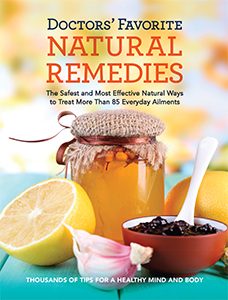Lavender Oil: Harness the Healing Powers of This Fragrant Herb
Updated: Jul. 22, 2016
This herb counters inflammation, swelling, and pain, while protecting against infection.

Lavender, a native herb of the Mediterranean region, is best known for its aromatic purple flowers. But it also has a long history of therapeutic use, being described by medieval herbalist John Parkinson as being of “especially good use for all griefes and paines of the head and brain.” Victorian ladies carried hand-sized lavender-filled “swooning sachets” so they could recover from a corset-induced faint.
How Lavender Works
Lavender has analgesic (pain-relieving), digestive, sedative, antiseptic, antibacterial, carminative and antispasmodic properties. Its therapeutic benefits are thought to be due to two constituents, linalool and linalyl aldehyde, which counter inflammation, swelling and pain, while protecting against infection.
Lavender is a versatile remedy that can help many minor health ailments, including: insomnia, fatigue, nausea, indigestion, stress-related headaches and migraines. Lavender helps to calm the mind; it may be of benefit in calming the agitation often experienced by people with dementia. Taking a bath scented with lavender oil or misting bedding with lavender water are effective tips for improving sleep quality and duration. Lavender is particularly indicated for a nervous or irritable stomach or bowel as it can help soothe gastrointestinal upsets and reduce excess wind.
Lavender’s skin-healing ability makes it a useful remedy for minor cuts, scrapes and burns, as well as itchiness, rashes, herpes, ulcers or shingles. Lavender is a useful gargle and inhalant remedy that can help relieve symptoms of bronchitis, coughs, colds and flu. It may also help relieve asthma, especially if triggered by stress.
Lavender essential oil can be used topically for menstrual cramps, toothache, earache and sore muscles, and as an inhalant for pain and anxiety management during labor and medical or dental procedures and postoperative pain. It may be of assistance for the topical treatment of fungal infections such as candida. It is an effective insect repellent and can be used in both prophylactic and treatment preparations for head lice.
How to Use Lavender
Make lavender tea by steeping fresh or dried flowers in boiling water for five minutes. (If purchasing, make sure it is food grade lavender). For topical applications, lavender essential oil is gentle enough to be used neat, massaged into the temples, for example, or in aromatherapy baths, massage oils, ointments, compresses or inhalations. A qualified herbalist can make up a lavender tincture, often in conjunction with other synergistic herbs (such as valerian, for insomnia).
Safety First
Lavender essential oil should not be taken internally. People with gallstones or biliary tract obstructions should avoid lavender, as it may stimulate bile secretion. Very occasionally, lavender may cause skin irritation. Do not use lavender if you are allergic to the Lamiaciae family of plants, which includes types of basil, mint and sage.
Where to Find Lavender
Lavender tea may be purchased in health food stores; lavender essential oil is available in health food stores and pharmacies. Tinctures can be made up by a qualified herbalist.

Get More Natural Remedies Doctors Approve!
The book Doctors’ Favorite Natural Remedies offers effective ways to treat more than 85 health conditions and evaluates the most commonly used alternative therapies and supplements. Learn more and buy Doctors’ Favorite Natural Remedies here.